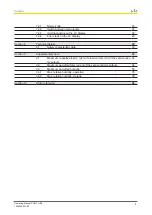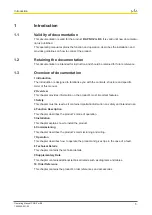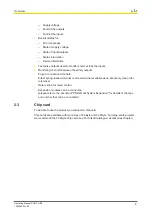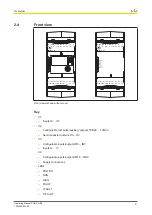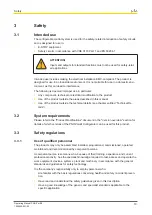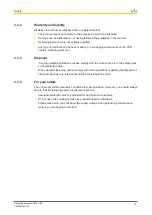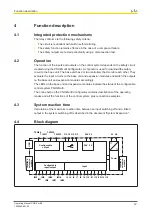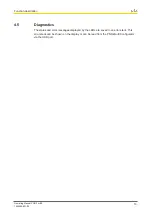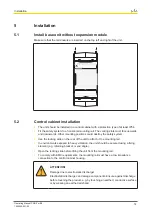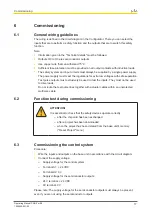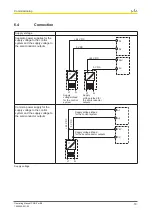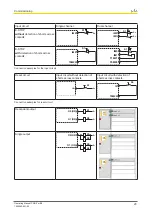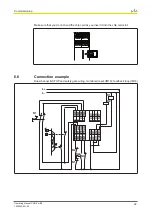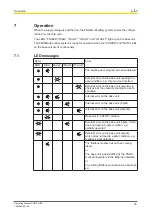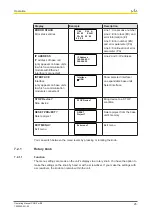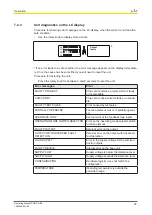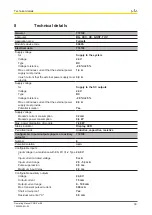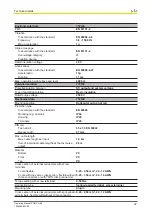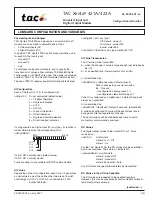
Commissioning
Operating Manual PNOZ m B0
1002660-EN-02
17
Commissioning
General wiring guidelines
The wiring is defined in the circuit diagram in the Configurator. There you can select the
inputs that are to perform a safety function and the outputs that are to switch this safety
function.
Note:
}
Information given in the "Technical details" must be followed.
}
Outputs O0 to O3 are semiconductor outputs
}
Use copper wire that can withstand 75°C.
}
Sufficient fuse protection must be provided on all output contacts with inductive loads.
}
The safety system and input circuits must always be supplied by a single power supply.
The power supply must meet the regulations for extra low voltages with safe separation.
}
Test pulse outputs must exclusively be used to test the inputs. They must not be used
to drive loads.
Do not route the test pulse lines together with actuator cables within an unprotected
multicore cable.
Function test during commissioning
ATTENTION!
It is essential to check that the safety devices operate correctly
– after the chip card has been exchanged
– after a project has been downloaded
– when the project has been deleted from the base unit's memory
("Reset Project" menu)
Commissioning the control system
Procedure:
}
Wire the inputs and outputs on the base unit in accordance with the circuit diagram.
}
Connect the supply voltage:
– Supply voltage for the control system:
– Terminal A1: + 24 VDC
– Terminal A2: 0 V
– Supply voltage for the semiconductor outputs:
– 24 V terminal: + 24 VDC
– 0V terminal: 0 V
Please note: The supply voltage for the semiconductor outputs must always be present,
even if you are not using the semiconductor outputs.
6
6.1
6.2
6.3


